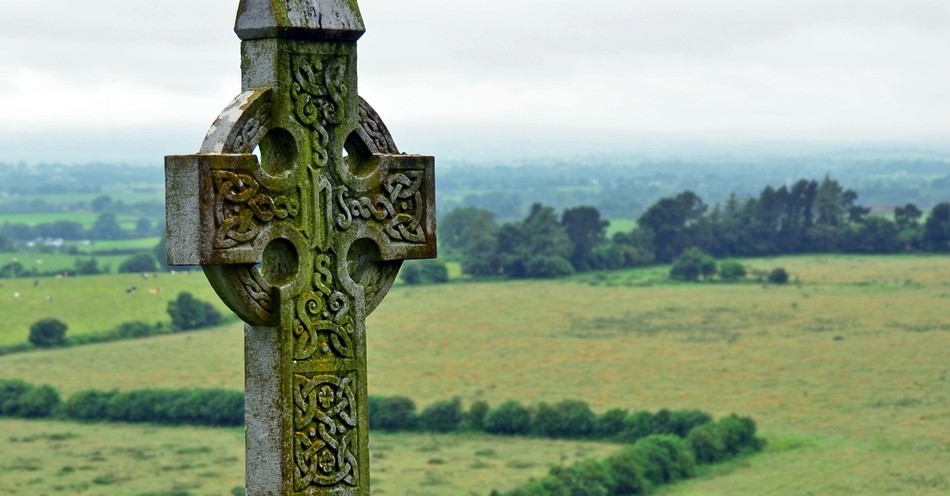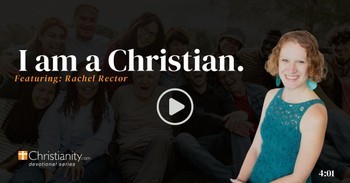When most people think about Celtic Christianity, St. Patrick’s Day comes to mind. Pop culture has turned St. Patrick’s Day into a time of parades, wearing green, and pride in Irish heritage. People around the world wear shamrocks and leprechaun hats while enjoying music and feasting. Many drink green beer or eat corned beef and cabbage for the holiday. Chicago actually dyes their river green. However fun these things might be, they mask the true wealth of history and spirituality of St. Patrick and the impact of Celtic Christianity.
A few people might view Celtic Christianity as more mystical and centered around nature. Modern spirituality includes Celtic prayers and blessings as poetic and meditative. Symbols like the Celtic cross, knotwork, and the Trinity symbol appear in films and other media. The Celtic tradition mixes art and faith in unique ways, and the ancient, mystic nature makes it seem more fantastic to people. Due to the romantic view of Celtic Christianity in harmony with nature, New Age spirituality or neopaganism incorporates some of the symbols and ideas, blurring religious lines.
Despite all these perspectives and cultural influences, most Christians aren’t aware of the amazing history of Celtic Christianity. Looking at these ancient Christians and their dedication to faith, we can find incredibly relevant lessons for our culture today.
Who Were the Celts?
The term “Celtic” means the Irish and Scots for people today. However, we can trace this identity back to ancient Europe.
Originally, the Celts were a collection of tribes spread across much of Europe, from modern areas of Spain and France through central Europe and even Turkey. The ancient Greeks and Romans called these tribes, loosely affiliated by culture, “Keltoi” and “Gauls.” The Romans revered them as fierce warriors with artistic styles and unique customs, essentially “barbarians.” These early Celts shared similar language roots, metal technology, and a nature-mysticism.
As the Roman Empire conquered Europe, it assimilated many Celtic peoples and mostly erased their distinct culture. Only the western island areas of Ireland, Scotland, and Wales protected the Celtic culture. These lands maintained their unique languages (Irish Gaelic, Scottish Gaelic, and Welsh) along with traditions of storytelling, music, and art.
During the 18th and 19th centuries, nationalist scholars referred to the Celts, particularly Ireland, as a way to affirm local cultures and resist British rule. These scholars argued and popularized the idea that the Irish, Scots, and Welsh peoples were the true descendants of the ancient Celts, leading most today to refer to the Irish and others nearby as Celtic.
Ultimately, the Celts were never a unified people but instead a collection of tribes with similar cultures and languages and, ultimately, a unique model of Christianity.
Who Evangelized the Irish Celts?
The particular brand of Celtic Christianity begins with Saint Patrick, who evangelized the entire island of Ireland. His ministry laid a foundation for Ireland’s amazing legacy of Christian faith.
Patrick wasn’t Irish. He was born in nearby Britain, around the early fifth century, into a Roman Christian family. At sixteen years old, Irish raiders came to his home and kidnapped him. The Irish sold him into slavery in Ireland. He worked for six years as a shepherd and slave, learning the language and customs of his captors. In his desperation, he turned to prayer, his faith becoming real. One night, he dreamed God told him to escape. He followed the vision, ran away, and God miraculously led him back to his family in Britain.
His faith led him to seek the Catholic priesthood. During his religious training, he experienced another vision in which the Irish people called him back to bring them the Gospel. The former slave became a priest and bishop before traveling to Ireland around 432 AD.
Patrick journeyed around Ireland, preaching to kings, druids, and commoners. He established churches, schools, and monasteries. These became places people went to learn all types of educational topics, including Christianity. He baptized thousands, ordained priests, and even trained new missionaries to continue the work. He famously challenged a pagan/druid High King at the Hill of Tara. Patrick lit the Paschal fire, defying tradition, and revealed the supremacy of Christ over paganism. Patrick's radical courage helped him gain respect with the king and others.
When Patrick died, after almost thirty years in the country, Ireland as a whole had embraced Christianity. He converted an entire nation without force. Ireland became known as the “Island of Saints and Scholars,” leading to a robust missionary movement into Europe for centuries after Patrick. Because of his phenomenal ministry, millions around the world honor St. Patrick on March 17.
How Did St. Patrick’s Methods Differ from Rome?
The Roman approach to missions was extremely structured and relied upon Roman military conquest for political power and support. Patrick’s method adapted to the Irish culture. He didn’t rely upon a foreign government to proclaim the Gospel or start churches. He engaged directly with Ireland's local leaders and kings.
At the time, Ireland had no central government or large cities. Independent tribes ruled different areas, each ruled by a chieftan. From his time as a slave, he understood this system. He approached these local leaders first, able to speak to them in their own language, and preached the Gospel to them. Converting the leaders first, he had protection for the Christian communities he started. The Romans' model included coming in, conquering, establishing a Roman administrative center, and then building churches to teach in Latin, a foreign language.
The Roman Catholics would usually seek to destroy the local culture of “barbarians” and replace it with their own supposedly supreme version. Patrick intentionally used Irish customs and symbols to preach the Gospel. He used familiar symbols like the shamrock to explain the Trinity. He took Irish traditions like the sacred fire for use in Christian churches. Patrick affirmed and loved the culture, and these methods helped the Irish own Christianity for themselves instead of seeing it as a foreign religion.
The Roman Church relied on a strict hierarchy with bishops and religious rulers over cities and surrounding areas. Patrick established a monastic style system. His monasteries became the heart of Irish Christianity, independent communities that were centers of both religious and secular education. These places trained priests and missionaries who later spread Christianity into Scotland, England, and even Europe after the fall of the Roman Empire.
Patrick’s model proved extremely effective, and Ireland became a new center of the Christian faith after Rome’s fall. Since the Roman model relied upon force and conquest, when the empire left, tribes of people in Europe reverted to their pagan roots. Patrick made sure the Celts felt ownership in their faith, independent of Rome. Therefore, the Celts remained faithful and ended up re-evangelizing Europe after the Roman Empire.
How Did Patrick’s Methods Influence Irish Missionary Work?
When the Celts sent missionaries back into Europe, they used Patrick’s model—monastic and culturally sensitive. The Irish missionaries used the model they learned and lived within. They saw the effectiveness and used those principles to spread the Gospel to previously conquered peoples in Europe. Instead of waiting for a central power or authority to reestablish Christianity by force, Irish monks traveled independently, winning new disciples by tribe and community and through reason, just as Patrick had done in Ireland.
The monastic system also influenced Ireland’s missionary movement. Rather than building a church hierarchy, Irish missionaries like Columba and Columbanus followed Patrick’s example all over Europe, founding monasteries as general educational centers through France, Germany, and Italy. These monasteries were built to be self-sustaining communities instead of needing financial or political support from a government. These hubs flourished in the chaos after Rome’s fall.
As Patrick taught them, Irish missionaries learned local languages and customs to engage with tribes and peoples in ways that honored their heritage. In France and Germany, Columbanus and his followers preserved local languages and customs while spreading the Gospel in peaceful and loving ways.
Looking at the Bible, specifically how Paul evangelized the Gentiles, we see overlap between Patrick’s methods and the accounts in Acts and Paul’s letters. Through Patrick’s approach, he preserved a Celtic culture the Romans had tried to eradicate throughout Europe. The Gospel doesn’t seek to spread one nation’s culture but the Good News of the Kingdom, redeeming each culture and language to worship the one God. This is the legacy of Celtic Christianity.
What Can We Learn from Celtic Christianity?
The Celtic approach shows us the Gospel doesn’t require people to completely abandon their culture to live for Christ. Instead, it calls them to see Christ within their own culture, often in hidden ways, making a natural bridge to faith. The apostle Paul modeled this. To the Jews, he was a Jew. With the Greeks (non-Jews), he was a Greek (1 Corinthians 9:22). He spoke different languages and offered culturally relevant examples to point people to the one God, whether in a synagogue or at Mars Hill in Athens.
As Celtic Christianity affirmed local culture rather than erasing it, we should learn to engage people where they are, respecting cultural backgrounds while presenting the absolute and universal Gospel. In missions and evangelism, we have to avoid the mistake of connecting Christianity with one particular culture. The Gospel transcends cultures and can, therefore, be expressed in any society. Local languages, music, art, and traditions can all be redeemed to worship God, pointing a whole culture to the King of Kings in a way they understand.
Celtic Christianity teaches the Gospel is unchanged even as we adapt the way we communicate it. Patrick and his missionaries never compromised biblical truth. They confronted sin, challenged pagan beliefs, and proclaimed Christ alone for salvation. However, they did this through methods that resonated with the Irish people. We mustn’t allow culture to be an obstacle to hearing the Gospel. We can continue to find creative ways to express eternal truth.
Finally, Celtic Christianity didn’t use force or manipulation. They made friends through shared culture and language, and then they reasoned with and invited people into the Kingdom through a relationship with Christ. The Celtic missionaries were generous to local communities through education and charity, showing God’s love even if people didn’t repent to Jesus. The Kingdom isn’t about coercion or force. If God in the flesh, Jesus, the all-powerful one, didn’t force anyone, neither should we.
By learning from Celtic Christianity, we can share the Gospel in creative ways that honor culture while upholding the eternal truth of Jesus. When people see Christ within their own language and context, they can embrace him fully as one who loves them. When we think of Celtic Christianity, we should think of these truths more than wearing green or dressing like leprechauns.
Peace.
Photo Credit: ©iStock/Getty Images Plus/Piero Facci


_638919941832670018.jpg)

%20(5).jpg)
